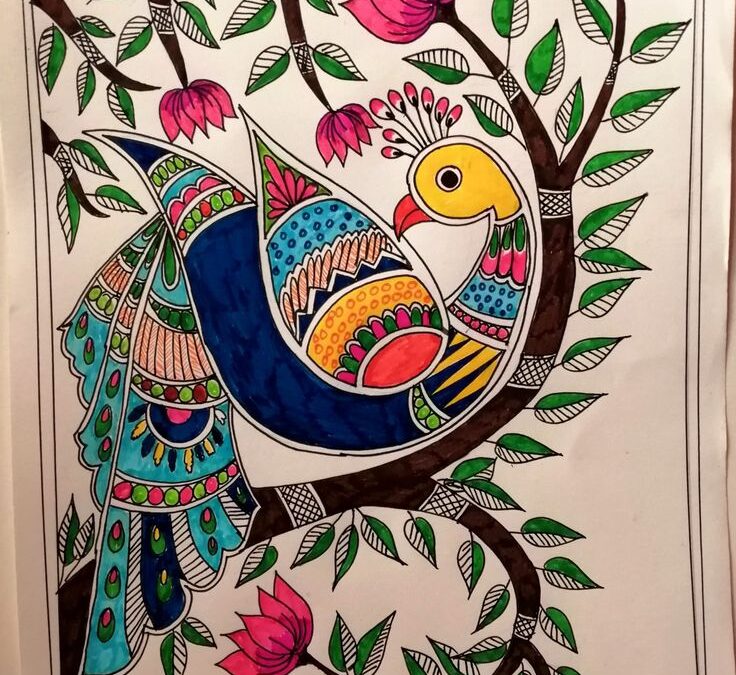Madhubani painting is a traditional art form originating from the Mithila region of Bihar, India. Known for its intricate details, vibrant colors, and symbolic motifs, Madhubani paintings are typically created using natural dyes and pigments on surfaces like paper, cloth, and walls.
The artwork is characterized by the use of geometric patterns, intricate line work, and themes drawn from mythology, folklore, nature, and daily life. Common motifs include depictions of deities, animals, plants, and celestial bodies. The paintings often have a rich narrative quality, telling stories or conveying religious and cultural symbolism.
Madhubani painting can be divided into several styles, including:
- Bharni: Uses bright colors and fills in the painting with solid hues.
- Kachni: Features intricate line work with little to no color, focusing on detailing and shading.
- Tantrik: Often features esoteric and spiritual themes, with symbolic representation.
- Godna: Inspired by tribal tattoo art and often contains bold, geometric designs.
Traditionally, women in the Mithila region practiced this art form, and it has now become a prominent symbol of Indian folk art.

